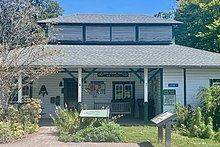
The Appalachian Trail, also called the A.T., is a hiking trail in the Eastern United States, extending almost 2,200 miles (3,540 km) between Springer Mountain in Georgia and Mount Katahdin in Maine, and passing through 14 states. The Appalachian Trail Conservancy claims the Appalachian Trail to be the longest hiking-only trail in the world. More than three million people hike segments of the trail each year.

Appalachian Mountain Club (AMC) is the oldest outdoor group in the United States. Created in 1876 to explore and preserve the White Mountains in New Hampshire, it has expanded throughout the northeastern U.S., with 12 chapters stretching from Maine to Washington, D.C. The AMC's 100,000 members, its advocates, and supporters mix outdoor recreation, particularly hiking and backpacking, with environmental activism. Additional activities include cross-country skiing, whitewater and flatwater canoeing and kayaking, sea kayaking, sailing, rock climbing and bicycle riding. The Club has about 2,700 volunteers, who lead roughly 7,000 trips and activities per year. The organization publishes a number of books, guides, and trail maps.

The Long Trail is a hiking trail located in Vermont, running the length of the state. It is the oldest long-distance trail in the United States, constructed between 1910 and 1930 by the Green Mountain Club. The club remains the primary organization responsible for the trail, and is recognized by the state legislature as "the founder, sponsor, defender, and protector" of the Long Trail System.
Earl V. Shaffer, was an American outdoorsman and author known from 1948 as The Crazy One for attempting what became the first publicized claimed hiking trip in a single season over the entire length of the Appalachian Trail (AT). He also worked as a carpenter, a soldier specializing in radar and radio installation, and an antique dealer.

The Green Mountain Club is a non-profit membership organization dedicated to preserving and protecting Vermont's Long Trail. The Long Trail is the oldest long-distance hiking trail in America and stretches from the Massachusetts state line to the Canada–United States border, along the main ridge of the Green Mountains.
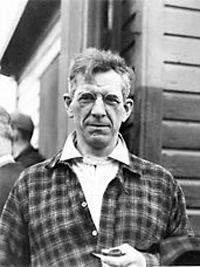
Benton MacKaye was an American forester, planner and conservationist. He was born in Stamford, Connecticut; his father was actor and dramatist Steele MacKaye. After studying forestry at Harvard University, Benton taught there for several years. He held positions in the U.S. Forest Service, the Tennessee Valley Authority, and the U.S. Department of Labor; he was also a member of the Technical Alliance where he participated in the Energy Survey of North America.
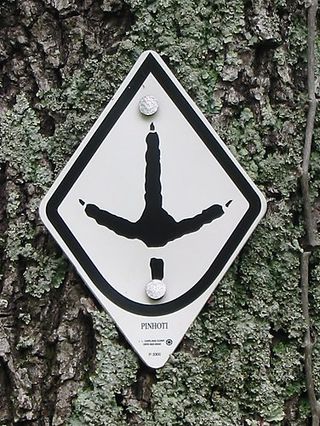
The Pinhoti Trail is a Southern Appalachian Mountains long-distance trail, 335 miles (540 km) in length, located in the United States within the states of Alabama and Georgia. The trail's southern terminus is on Flagg Mountain, near Weogufka, Alabama, the southernmost peak in the state that rises over 1,000 feet (300 m). The trail's northern terminus is where it joins the Benton MacKaye Trail. The trail's highest point is Buddy Cove Gap, with an elevation of 3164 feet near the Cohutta Wilderness. Its lowest point above sea level is close to Weogufka Creek near Weogufka State Forest at 545 feet.

The New York – New Jersey Trail Conference (NYNJTC) is a volunteer-based federation of approximately 10,000 individual members and about 100 member organizations. The conference coordinates the maintenance of 2,000 miles of foot trails around the New York metropolitan area, from the Delaware Water Gap, north to beyond the Catskill Mountains, including the Appalachian Trail through New York and New Jersey. It also works to protect open space and publishes books and trail maps. The organization's headquarters are at 600 Ramapo Valley Road, Mahwah, New Jersey.

Raymond Hezekiah Torrey was the author of weekly columns, Outings and The Long Brown Path in the New York Evening Post in the 1920s and 1930s. The column played a major role in the development of the 2,100-mile (3,400 km) Appalachian Trail, the Long Path and the popularity of hiking generally. He was a founding member of the New York–New Jersey Trail Conference and one of the authors of the first edition of the New York Walk Book. He had extensive scientific knowledge, writing about everything from the short-billed marsh wren to marine fossils and lichens; he could identify over 700 plants. He was secretary of the Association for the Preservation of the Adirondacks, and also secretary of the American Scenic and Historic Preservation Society.
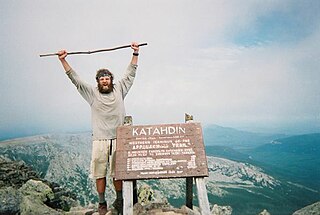
Thru-hiking, or through-hiking, is the act of hiking an established long-distance trail end-to-end continuously.

Myron Haliburton Avery was an American lawyer, hiker and explorer. Born in Lubec, Maine, Avery was a protégé of Judge Arthur Perkins and a collaborator and sometimes rival of Benton MacKaye. He was president of the Potomac Appalachian Trail Club from 1927 to 1941 and chairman of the Appalachian Trail Conference from 1931 to his death in 1952. The first 2000 Miler of the Appalachian Trail, he was also an alumnus of Bowdoin College and Harvard Law School.
The Appalachian National Scenic Trail spans 14 U.S. states over its roughly 2,200 miles (3,500 km): Georgia, North Carolina, Tennessee, Virginia, West Virginia, Maryland, Pennsylvania, New Jersey, New York, Connecticut, Massachusetts, Vermont, New Hampshire, and Maine. The southern end is at Springer Mountain, Georgia, and it follows the ridgeline of the Appalachian Mountains, crossing many of its highest peaks and running almost continuously through wilderness before reaching the northern end at Mount Katahdin, Maine.

Mount Zealand, or Zealand Mountain, is a mountain located in the White Mountains, in Grafton County, New Hampshire. Zealand stands on a spur ridge northeast of Mount Guyot, and facing Whitewall Mountain to the east across Zealand Notch.

The Monadnock-Sunapee Greenway (MSG) is a 50-mile (80 km) hiking trail that traverses the highlands of southern New Hampshire from Mount Monadnock in Jaffrey to Mount Sunapee in Newbury. Located approximately 27 miles (43 km) from the city of Concord, New Hampshire, the trail traverses a rural, heavily glaciated and metamorphic upland studded with lakes, heath barrens, the rocky summits of several monadnocks, and dense woodland of the northern hardwood forest type. The trail is maintained primarily through the efforts of the Monadnock-Sunapee Greenway Trail Club.
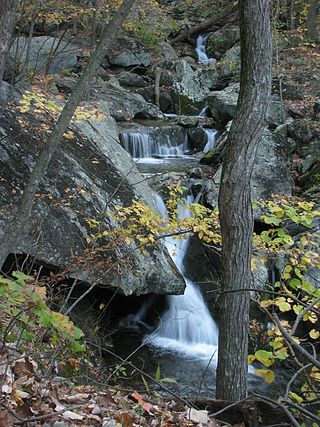
Three Ridges Wilderness is a U.S. Wilderness Area in the Glenwood/Pedlar Ranger District of the George Washington and Jefferson National Forests. The wilderness area is located just east of the Blue Ridge Parkway between the Tye River and Wintergreen Ski Resort.
The Priest Wilderness is a U.S. Wilderness Area in the Glenwood/Pedlar Ranger District of the George Washington and Jefferson National Forests. The wilderness area is located just south of the Tye River, the Three Ridges Wilderness, and Virginia State Route 56. The wilderness consists of 5,726 acres (23.17 km2) and ranges in elevation from 1,000 feet (305 m) at the Tye River to 4,063 feet (1,238 m) at the summit of The Priest.
Nestell Kipp "Ned" Anderson (1885–1967) was an American farmer who spearheaded Connecticut's leg of the Appalachian Trail, which currently runs for 50 miles through the northwest corner of the state. In addition to creating and maintaining other area trails for the Connecticut Forest & Park's (CFPA) Blue-Blazed Trail System, he also organized Sherman, Connecticut's first Boy Scout troop in 1931, as well as the Housatonic Trail Club in 1932, for amateur and avid hikers.
Arthur Perkins (1864–1932) was an American lawyer and judge from Hartford, Connecticut who, during his retirement, spearheaded the effort to make Benton MacKaye's vision of the Appalachian Trail—a proposed 2,000-mile contiguous footpath to run through fourteen states—a reality.

The Appalachian Trail Museum is located in Pine Grove Furnace State Park near Gardners, Pennsylvania, United States, and commemorates the builders, maintainers and hikers of the Appalachian Trail, including those in the Appalachian Trail Hall of Fame. Features include a 1959 trail shelter from Peters Mountain built by Earl Shaffer, the first A.T. thru-hiker, vintage hiking and trail building equipment, historic A.T. signs, A.T. displays on permanent loan from the Smithsonian Institution, a recreation of A.T. founder Benton MacKaye's Sky Parlor office and a display on the National Trails System Act of 1968. The museum also has an extensive research library.
Warren Doyle is a hiker and supporter of the Appalachian Trail. He holds the informal record for the hiking the entire Appalachian Trail the most times. From 1974 to 2017, he organized and led 10 groups up the entire Appalachian Trail. He is the founder of two organizations dedicated to the trail: the Appalachian Long Distance Hikers Association, and the Appalachian Trail Institute. He remains the Director of Appalachian Trail Institute.
